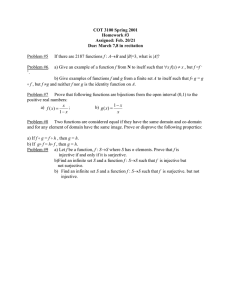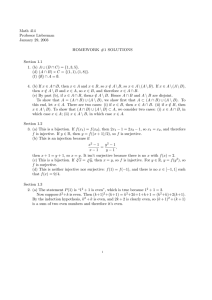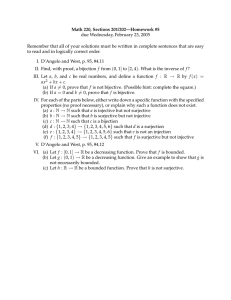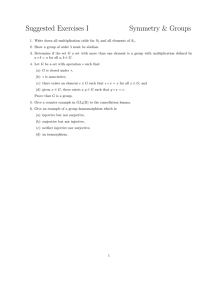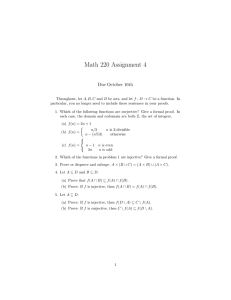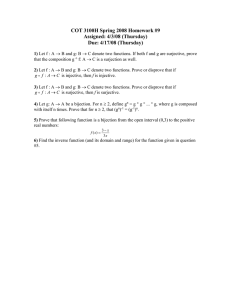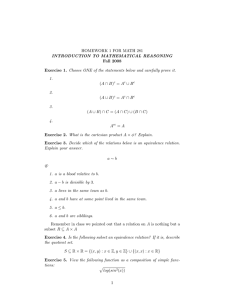Math 300, Sections C and D, Spring 2014, Worksheet 3
advertisement
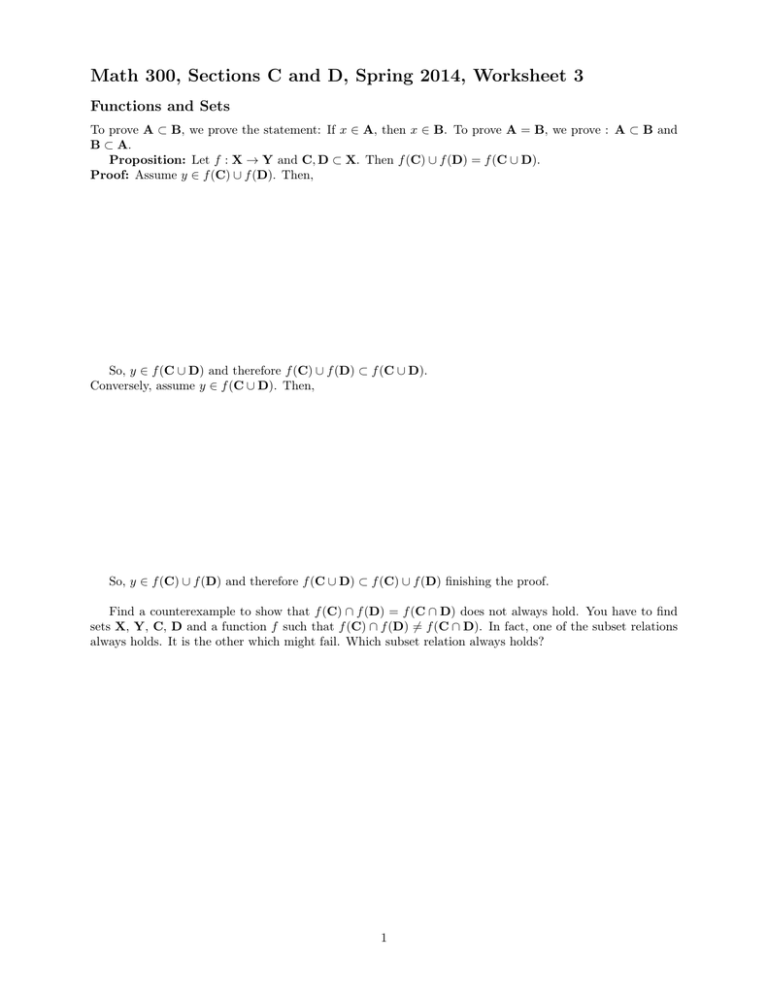
Math 300, Sections C and D, Spring 2014, Worksheet 3
Functions and Sets
To prove A ⊂ B, we prove the statement: If x ∈ A, then x ∈ B. To prove A = B, we prove : A ⊂ B and
B ⊂ A.
Proposition: Let f : X → Y and C, D ⊂ X. Then f (C) ∪ f (D) = f (C ∪ D).
Proof: Assume y ∈ f (C) ∪ f (D). Then,
So, y ∈ f (C ∪ D) and therefore f (C) ∪ f (D) ⊂ f (C ∪ D).
Conversely, assume y ∈ f (C ∪ D). Then,
So, y ∈ f (C) ∪ f (D) and therefore f (C ∪ D) ⊂ f (C) ∪ f (D) finishing the proof.
Find a counterexample to show that f (C) ∩ f (D) = f (C ∩ D) does not always hold. You have to find
sets X, Y, C, D and a function f such that f (C) ∩ f (D) 6= f (C ∩ D). In fact, one of the subset relations
always holds. It is the other which might fail. Which subset relation always holds?
1
Injections, surjections and bijections
Afunction f : X → Y is injective if
∀x1 , x2 ∈ X
f (x1 ) = f (x2 ) =⇒ x1 = x2 ,
surjective if
∀y ∈ Y
∃x ∈ X
f (x) = y
and bijective if it is both injective and surjective.
When you define the functions below, you can first list the two sets and use arrows to define the functions.
Then, try to come up with equations.
1. Find a function f : N → Z which is neither injective nor surjective.
2. Find a function f : N → Z which is injective but not surjective.
3. Find a function f : N → Z which is not injective but surjective. It may be easier if you do the last
one before this one.
4. Find a function f : N → Z which injective and surjective. I sort of did this for you in class when I
started listing elements of Z.
2
Counting finite sets
Below, we will prove that a set with n elements has 2n subsets by proving that the power set of {1, 2, ...n}
has 2n elements. We have already shown this fact using induction. This is another proof. Two sets X and
Y have the same cardinality if there exists a bijection f : X → Y. A set has m elements (and is therfore
finite) if it has the same cardinality as {1, 2, ..., m}.
Let A = P ({1, 2, ..., n}), the power set of the set of first n positive integers, B = {(a1 , a2 , ...an ) : ai =
0 or 1}, and C = {1, 2, 3, ..., 2n }.
1. Find a bijection f : A → B.
2. Find a bijection g : B → C.
3. Use your answers above to define a bijection from A to C finishing the proof.
3
